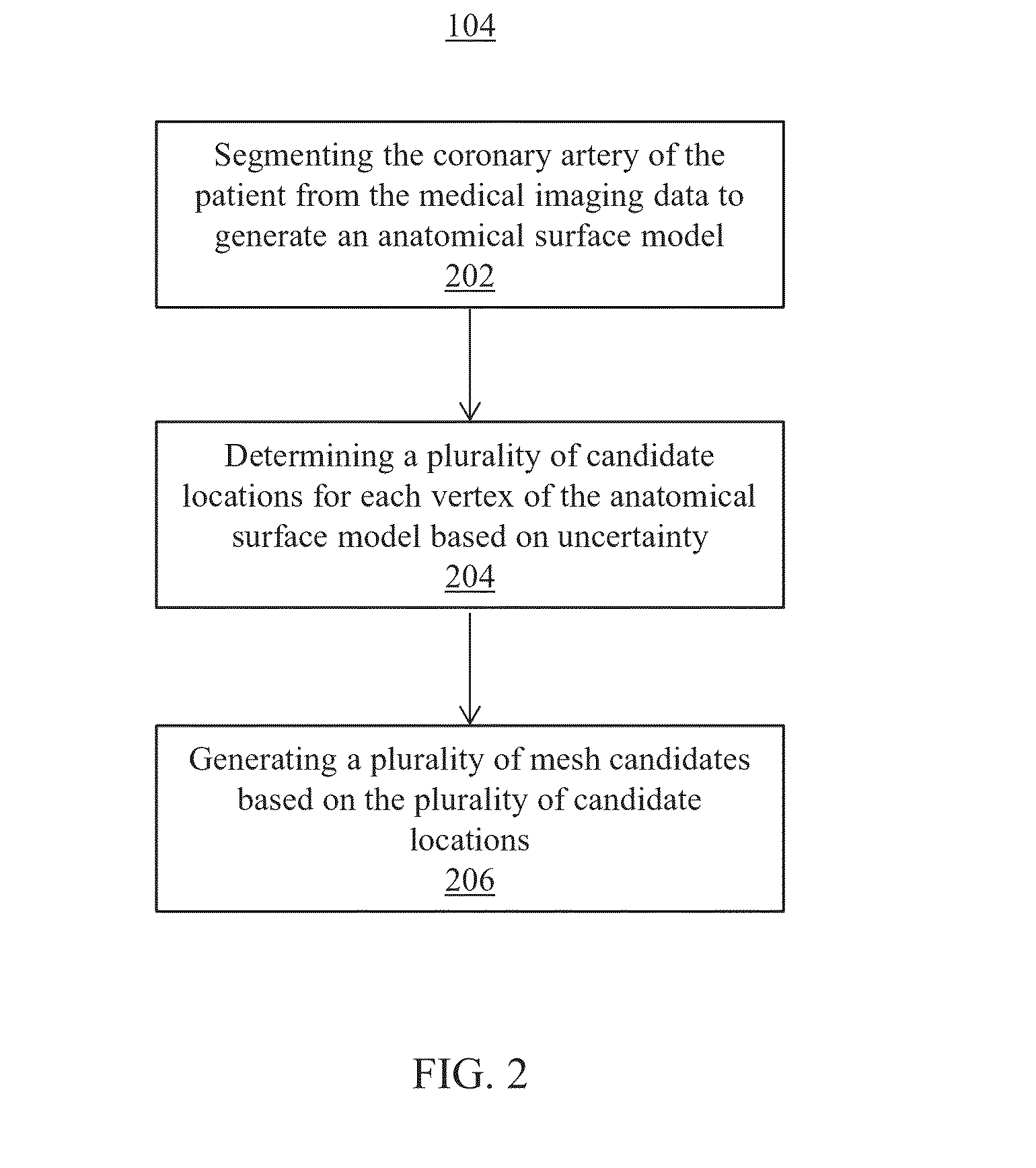Method and System for Improved Hemodynamic Computation in Coronary Arteries
a technology of hemodynamic computation and coronary artery, which is applied in the direction of image enhancement, instruments, and recognition of medical/anatomical patterns, can solve the problems of not providing a functional assessment of the effect of the lesion on blood flow through the vessel, causing an additional pressure drop, and increasing the risk of premature morbidity and mortality for cad patients
- Summary
- Abstract
- Description
- Claims
- Application Information
AI Technical Summary
Benefits of technology
Problems solved by technology
Method used
Image
Examples
Embodiment Construction
[0014]The present invention generally relates to improving the workflow of a clinical decision based on hemodynamic indices. Embodiments of the present invention are described herein to give a visual understanding of methods for improving the workflow of a clinical decision. A digital image is often composed of digital representations of one or more objects (or shapes). The digital representation of an object is often described herein in terms of identifying and manipulating the objects. Such manipulations are virtual manipulations accomplished in the memory or other circuitry / hardware of a computer system. Accordingly, it is to be understood that embodiments of the present invention may be performed within a computer system using data stored within the computer system.
[0015]Further, it should be understood that while the embodiments discussed herein may be discussed with respect to medical imaging data of a patient, the present principles are not so limited. Embodiments of the pres...
PUM
 Login to View More
Login to View More Abstract
Description
Claims
Application Information
 Login to View More
Login to View More - R&D
- Intellectual Property
- Life Sciences
- Materials
- Tech Scout
- Unparalleled Data Quality
- Higher Quality Content
- 60% Fewer Hallucinations
Browse by: Latest US Patents, China's latest patents, Technical Efficacy Thesaurus, Application Domain, Technology Topic, Popular Technical Reports.
© 2025 PatSnap. All rights reserved.Legal|Privacy policy|Modern Slavery Act Transparency Statement|Sitemap|About US| Contact US: help@patsnap.com



